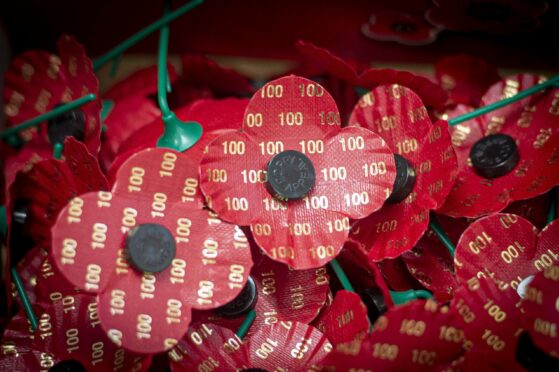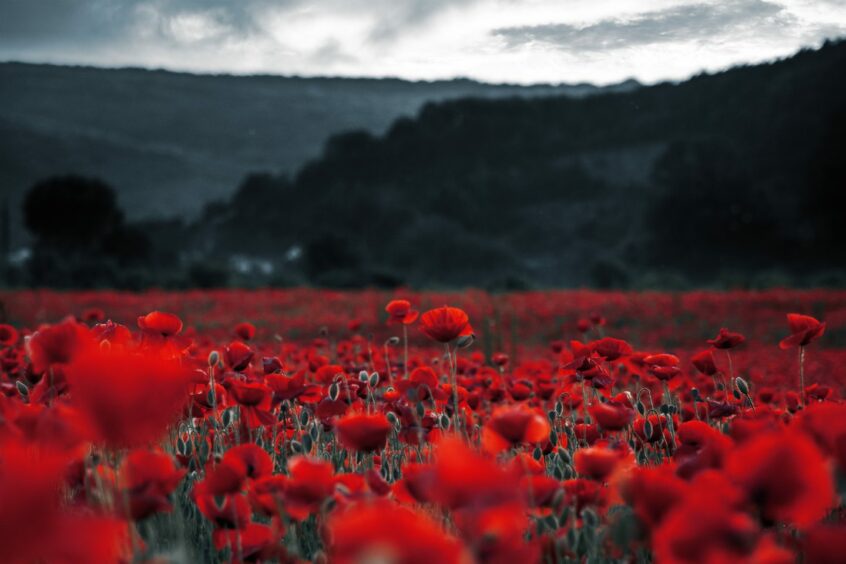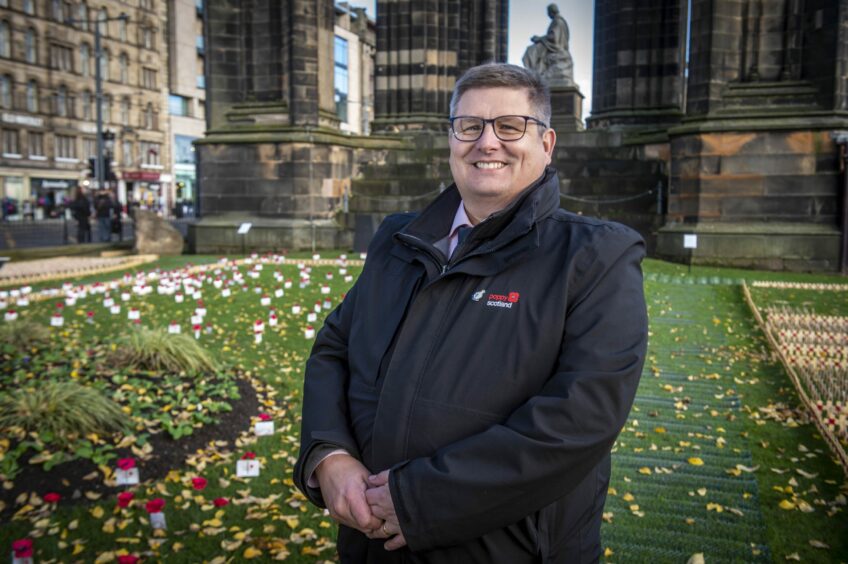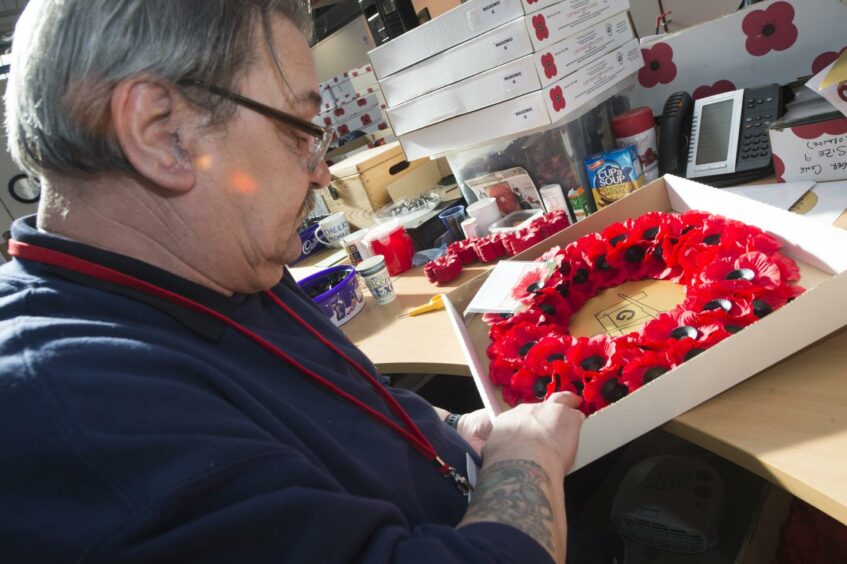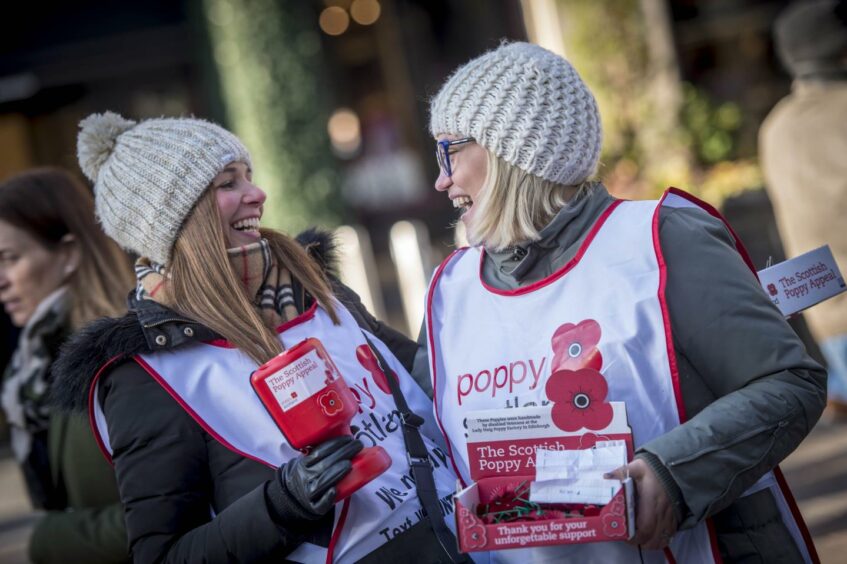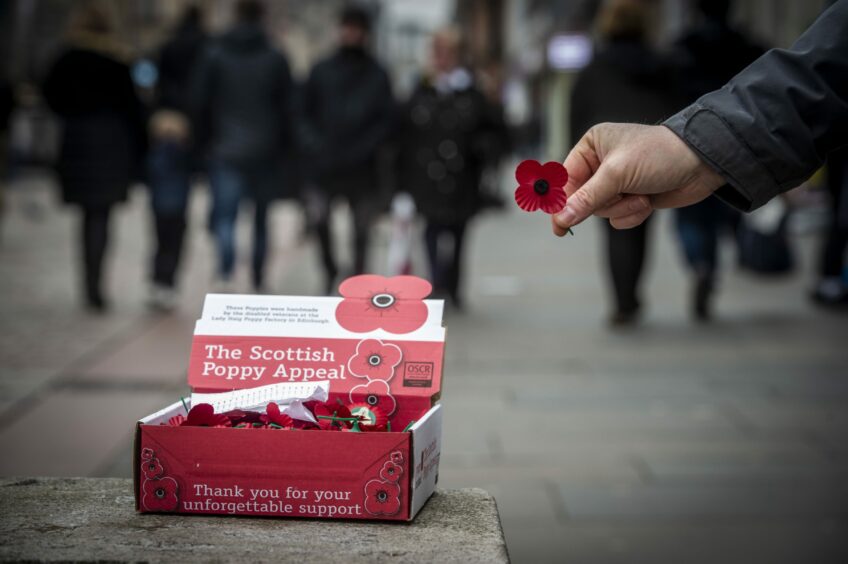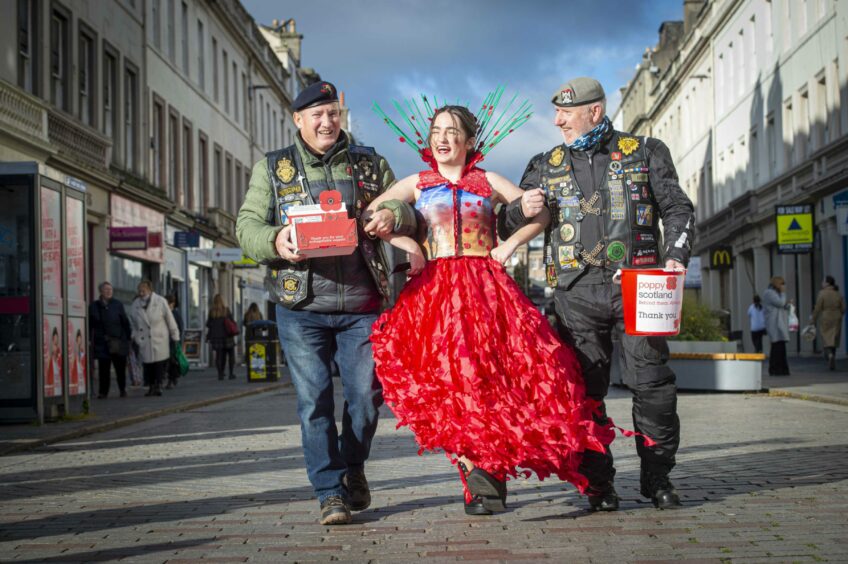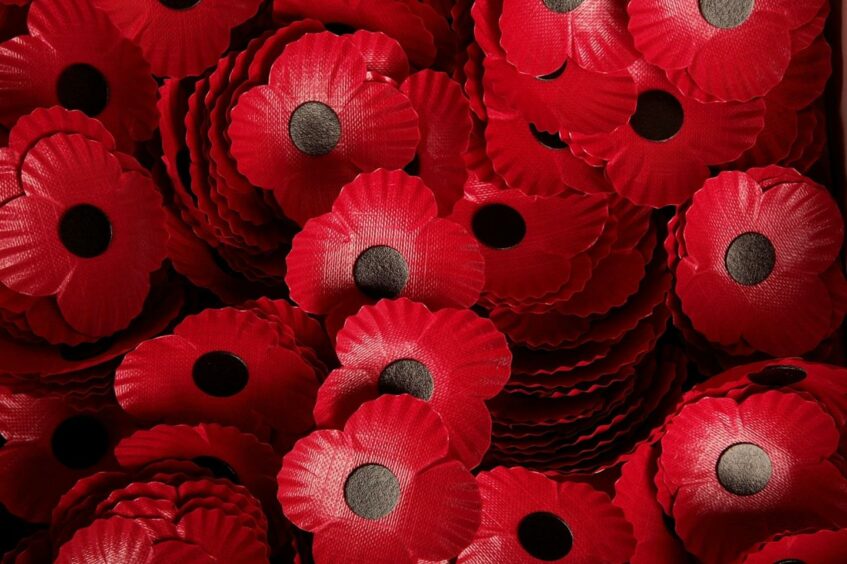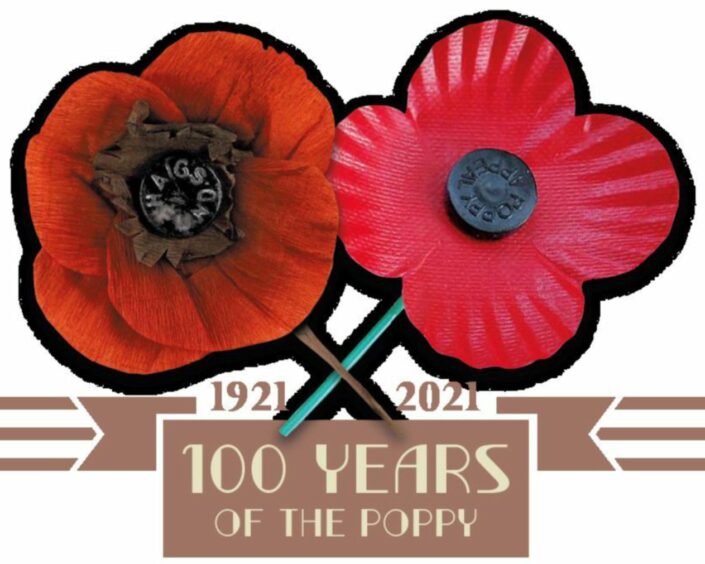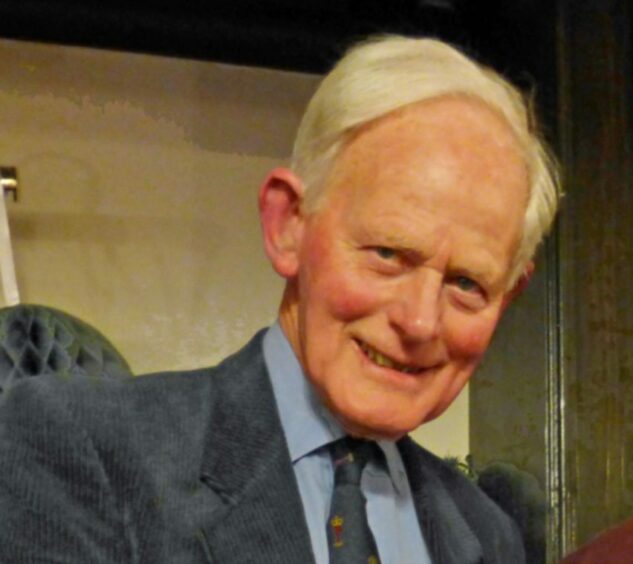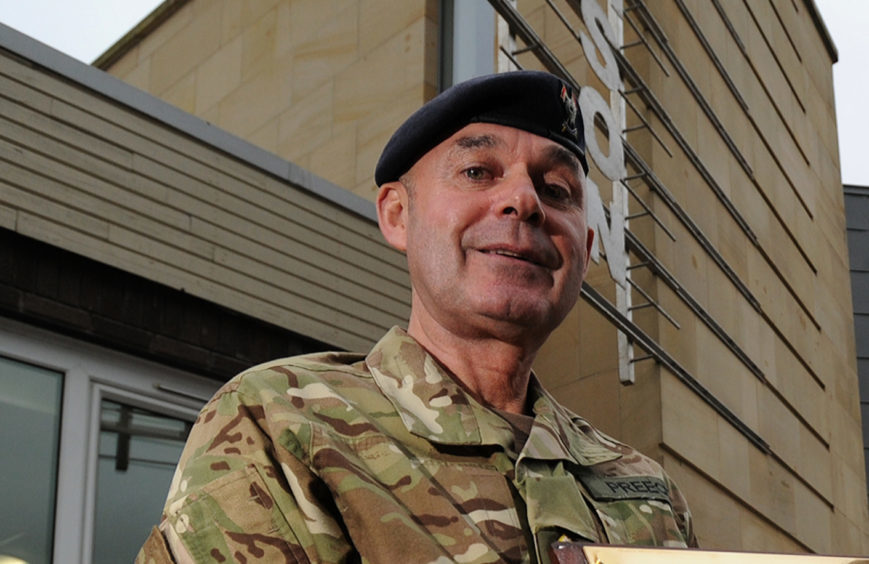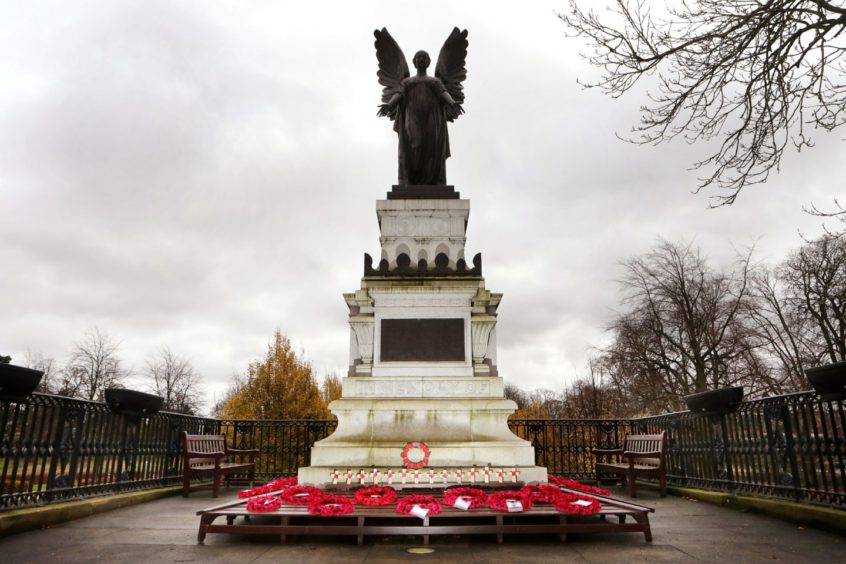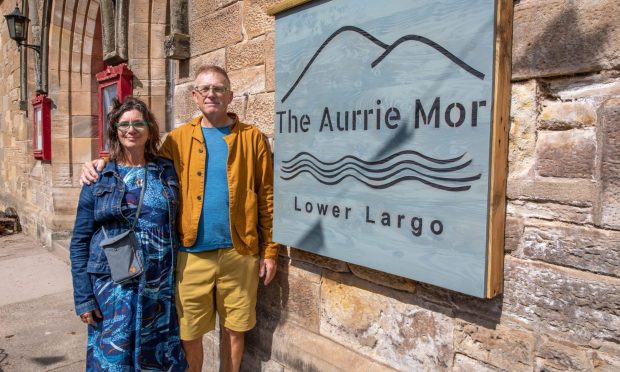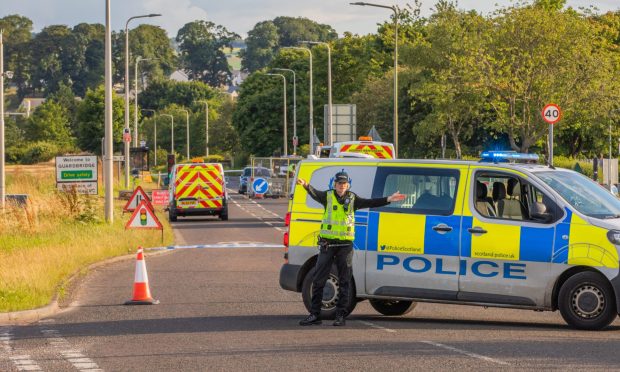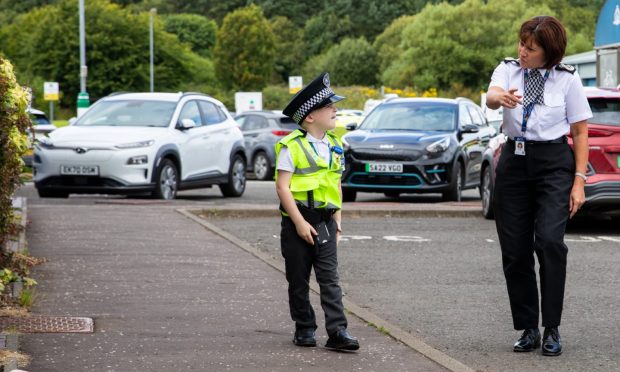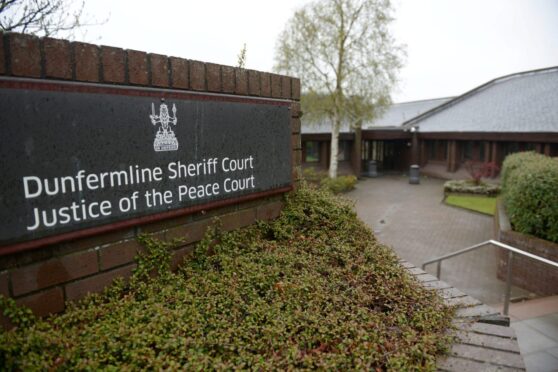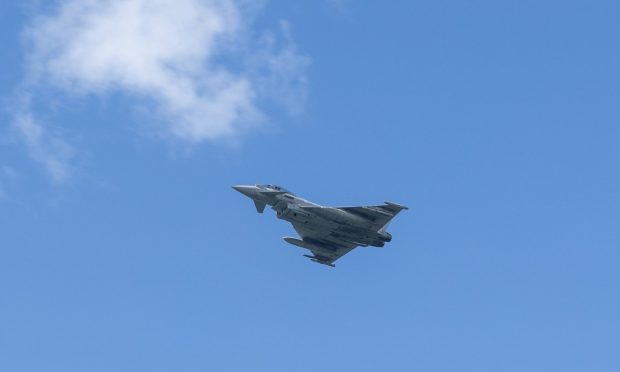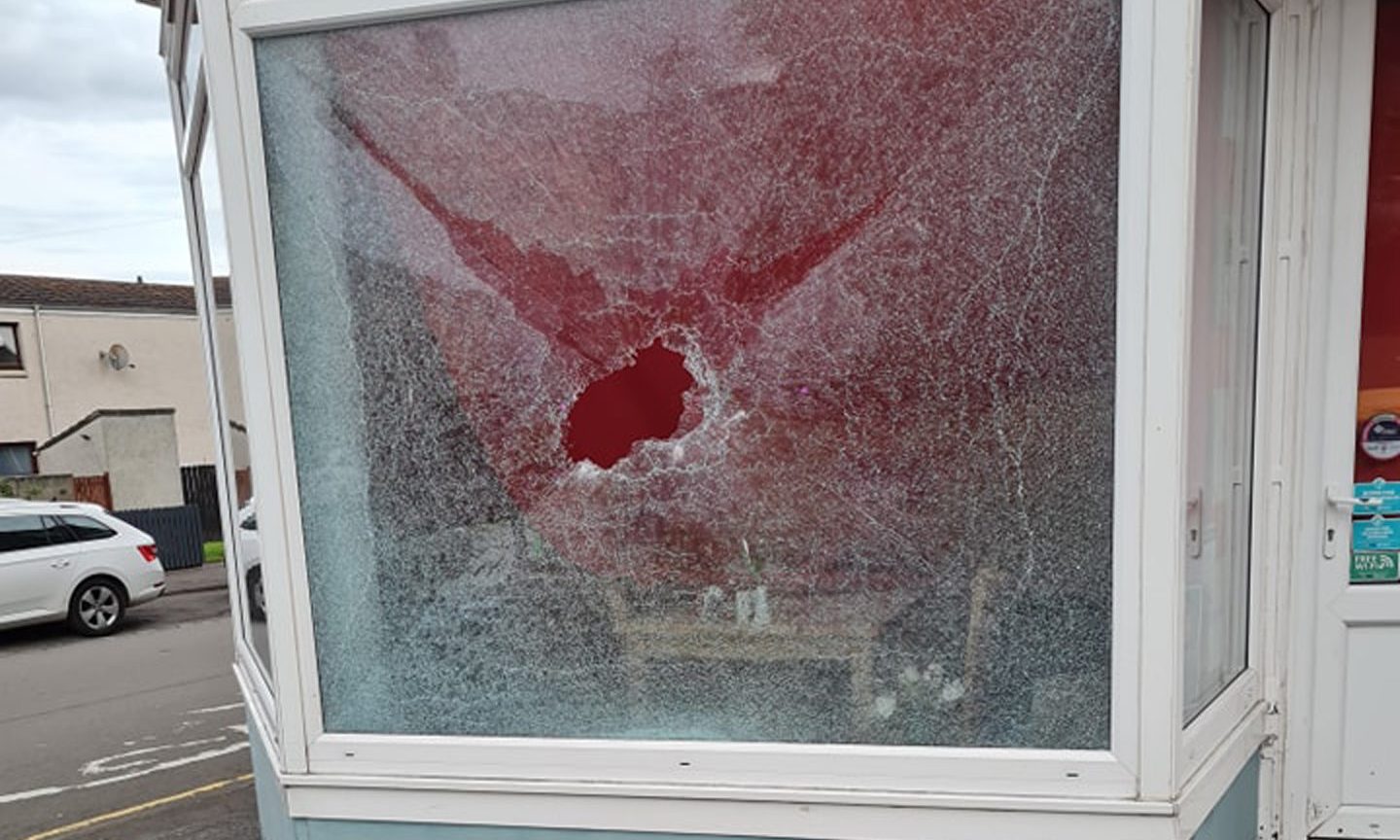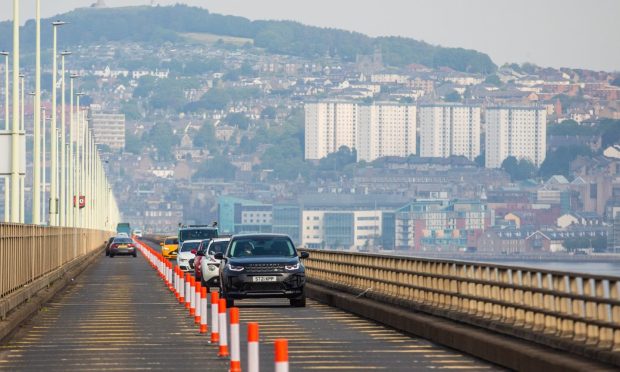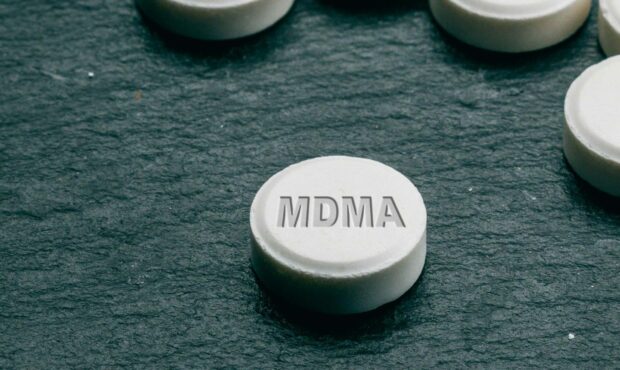On the eve of Remembrance Sunday, Michael Alexander looks into the significance of the red poppy which has been a symbol of remembrance, and a poignant charity fundraising tool, for 100 years.
It is a symbol of both remembrance and hope for a peaceful future as well as an important fundraising tool for military charities.
For 100 years, since the carnage of the First World War, the poppy has been used as a symbol of remembrance.
But how and why did the poppy come to be used, and why is the ‘Scottish’ poppy different to that used in other parts of the UK?
Destitution after war
Military charity Poppyscotland, explains that after the so-called Great War, many of those returning home faced destitution, as well as coping with the psychological trauma suffered as result of the horrific scenes they had witnessed on the front line.
Field Marshal Earl Haig, who was the Commander of the British Forces in the First World War, was horrified by the plight faced by so many men who had been under his command.
In 1921, Haig noticed some French widows selling silk poppies to raise funds for disabled ex-servicemen.
They had been inspired by Canadian army doctor Lt Col John McCrae’s iconic poem “In Flanders Fields”.
He wrote the poem in 1915 after the funeral and burial of his friend Lieutenant Alexis Helmer of the Canadian Field Artillery who was blown to bits by an artillery bombardment in the Second Battle of Ypres.
The poppy, which is central to the poem, was one of the few plants that survived in the churned up battlefields of Flanders, growing by the thousands amidst chaos and destruction.
The war created prime conditions for poppies to flourish in Flanders and north-west France (and Gallipoli).
The soil was disturbed by continual bombardment which brought the seeds to the surface. Nitrogen in the explosives and lime from the shattered rubble of the buildings fertilised the seeds.
Most poignantly, the blood and the bones of the millions of men, horses, donkeys, dogs and other animals is also said to have fertilized the soil.
According to Greek and Roman mythology, poppies were often placed on tombstones to represent eternal sleep.
Some even thought the vibrant red colour guaranteed resurrection after death.
Poppies were also discovered in King Tutankhamun’s tomb when he was buried around 1324 B.C. In Ancient Egypt, the poppy was a symbol of Osiris, the god of the dead.
New symbolism of poppy
When the Earl Haig Fund was established in 1921, however, to care for those who had suffered as a result of service during the First World War, the poppy took on new symbolism as a means to remember as well as a way to raise funds for veterans.
“When Field Marshall Haig founded the poppy as a symbol in 1921, he founded the poppy factory in Richmond where they started making the first artificial poppies by hand using disabled veterans,” explains Gordon Michie, head of fundraising and learning at Poppyscotland, who served in the RAF for nine years including a spell at RAF Leuchars.
“The first poppy appeal raised over £100,000 in 1921, which was a significant amount of money back then.
“Over the next few years the popularity and success of the appeal was growing to a stage where they weren’t making enough artificial poppies for the demand, and Scotland was not able to get poppies because they couldn’t make enough.
“The Field Marshal’s wife, Lady Dorothy Haig, set up the Lady Haig Poppy Factory in Edinburgh at Whitefoord House on the Royal Mile, down the Canongate.
“Since 1926 the Lady Haig Poppy Factory in Edinburgh has employed disabled veterans to make each of the Scottish poppies by hand and the wreaths by hand.”
Gordon, who grew up in Markinch, explained that having been administered by the Officers Association Scotland for 35 years, the Earl Haig Fund (Scotland) was registered as a distinct charity on November 26, 1956, and on March 26, 1999, it was incorporated as a charitable company.
In 2006, they changed their trading name to Poppyscotland to reflect a new year-round fundraising focus.
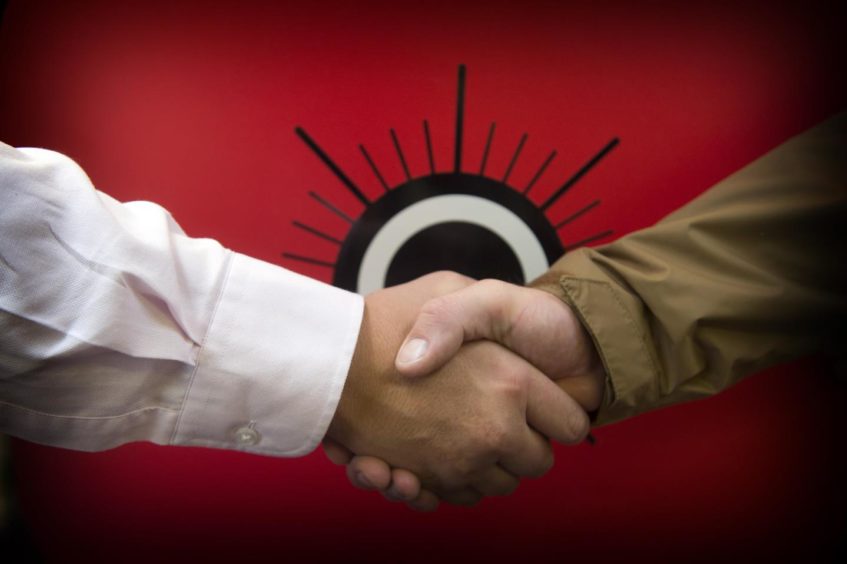
Although the charity is now well recognised as Poppyscotland, Earl Haig Fund (Scotland) remains as both the registered charity name and the registered company name.
Poppyscotland continues to operate as a distinct, separate charity within the Royal British Legion group of charities, with funds raised from the Scottish Poppy Appeal and other fundraising campaigns being used exclusively to support the armed forces and veterans’ community living in Scotland.
Impact of Covid-19
The largest annual charity street collection in Scotland, the challenges of fundraising during the Covid-19 restrictions last year meant the average £2.5 million made each year was down 28%.
With the health and safety of collectors put first, they took an overall hit despite other ways being found to collect money – including use of QR codes, fundraising pages and online donations.
This year, however, as people again pause to reflect on Remembrance Sunday, and despite some restrictions still being in place, hopes are high that fundraising will get closer to pre-pandemic levels.
“This year we’ve produced around three million poppies that have been distributed the length and breadth of the country from Shetland in the north right down to the Solway Coast in the south and everyplace in-between,” says Gordon.
“We are really fortunate and proud to have 10,000 volunteers who come out in November to raise money for the Scottish Poppy Appeal to ensure that the general public have the ability to wear that poppy.
“The poppy to me is the epitome of a symbol of peace, a symbol of hope and a symbol of a better future.
“It draws on the reflection and the poignancy of the carnage of the First World War but it’s not just about that conflict – it’s about every conflict since.
“I think that’s been one of our challenges that people associate the poppy with the First World War, but it’s not. It’s every conflict. It’s also the more recent ones like Afghanistan, Iraq, Kosovo, Falklands, Northern Ireland, Korea, the Second World War.
“It’s there to ensure we can raise the money to deliver a better future for those in need.”
Another important part of Gordon’s job is talking to the next generation about what the poppy means.
However, following some controversy in recent years that the poppy had become too politicised, Gordon adds: “It’s certainly not a flag waving exercise for the military.”
Scottish poppy ‘quirk’
Poppies sold across the UK and beyond have the same recognisable blood red colour.
However, the Scottish poppy is slightly different in that it has four-lobed petals and no leaf, in contrast to the poppy used in the rest of the UK which has two and sometimes sports a green leaf.
Gordon puts this down to a “slight quirk in history” from a time when Lady Haig was designing the poppy.
“In Scotland we are very proud of our design that’s a slightly different design from the one the Royal British Legion issue,” he says.
“But to us at Poppyscotland it’s the act of wearing the poppy that’s important, not necessarily the different designs of the poppy north and south of the border.”
Gordon explains that three million poppies are made in Scotland every year.
The veterans who make them do so “with a lot of pride”, and for many, it’s a process that helps get their lives back on track if they’re facing challenges adapting to civilian life.
“One of the challenges we’ve historically had is that we support people all year round and we need to raise money all year round,” says Gordon.
“We’ve developed other fundraising programmes of events, of direct mail, newsletter, prize draws, speaking to businesses so we get income all year round.
“It’s about flat-lining or growing that income month by month and not being reliant on that spike at remembrance time. In November, we are also at the mercy of the Scottish weather!
“But we really couldn’t do it without the amazing volunteers who collect money on our behalf, whether that’s shaking tins in supermarkets or standing out in the streets. They inspire me daily!”
Pride of volunteers
One long-standing Poppyscotland volunteer is former Fife councillor Anthony Garrett.
The 83-year-old has been poppy area organiser for Falkland and Newton of Falkland for 21 years.
Mr Garrett, who was just two years old when his First and Second World War veteran father was killed while serving with the Royal Tank Regiment at the Battle of Arras in 1940, is always keen to get new volunteers involved.
“I didn’t really know my father as I was only two when he was killed and had been away on service for much of that time,” explains Mr Garrett, whose wife’s aunt was the famous war correspondent Clare Hollingworth, who secured the “scoop of the century” when she broke news of Germany’s invasion of Poland in 1939.
“However his memory was very important to my brother and me and we both followed him into his regiment.
“I believe Remembrance Day is very important both for those who fell and their families but also to remind those for whom the two world wars are something from distant history of the horrors which they entailed.
“In these turbulent times it is essential that everyone knows how easily small differences between nations can escalate into major conflicts, sometimes driven by petty rivalry or greed.
“Collecting door to door in Falkland, it is good to find that people of all ages are keen to remember this message and parents are ensuring that their children know what Remembrance Sunday is about.”
Grandchild named ‘Poppy’
Amongst those also pausing to reflect on Remembrance Sunday and wearing his poppy with pride will be Cupar foodbank manager and retired army captain Joe Preece MBE.
The 65-year-old, who is chairman of the Cupar-branch of the Royal British Legion Scotland, served in the army for 46 years, including 24 years as permanent staff administration officer with the Fife and Forfar Yeomanry/Scottish Horse Squadron, latterly known as the Scottish and North Irish Yeomanry.
In 2016, he travelled to Turkey with a group of Army Reservists to commemorate the hundreds of Fife and Forfar Yeomanry men who died at Gallipoli during the First World War, as featured in The Courier.
“By wearing a poppy, you are showing respect and support for the service of armed forces, veterans and their families,” says Joe, who’s six year old granddaughter Bethany Hill was given the middle name ‘Poppy’ to commemorate being born on November 11.
“The flower represents lives lost in all conflicts from the First World War to present day.
“On Remembrance Sunday I will be wearing my poppy with pride to commemorate the sacrifices of our armed forces and to show support to those still serving today.”
Honouring family
The poppy is also poignant for retired Cupar solicitor Colonel Bill Pagan MBE, TD, DL, living as he does between Cupar’s War Memorial and St James the Great Episcopal Church, which always has a moving poppy display.
“My father’s brother, and my cousin, were both casualties of World War One,” says Bill, “and their names, George Osborne and George Pagan, are one above the other in the alphabetical list on the east side of the war memorial.
“This year is the poppy centenary, and previous centenaries have meant a lot to my family.
“Three of us visited George Pagan’s grave in France on the centenary of his death in 2016, and I visited George Osborne’s grave in Beersheba on the centenary of his death in 2017.
“The local branch of the Royal British Legion make a lot of effort hosting remembrance events.
“The pandemic has restricted what can be done for the Armistice Sunday parade, even this year, and I hope we can return to normal in 2022.
“However, the poppy wreaths on Cupar’s beautifully maintained war memorial will remind us for several weeks of the sacrifices made in wars by our predecessors from the Cupar area.”
